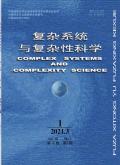Chemical reaction kinetic perspective with mesoscopic nonequilibrium thermodynamics
Q4 Engineering
引用次数: 9
Abstract
We distinguish a mechanical representation of the world in terms of point masses with positions and momenta and the chemical representation of the world in terms of populations of different individuals, each with intrinsic stochasticity, but population wise with statistical rate laws in their syntheses, degradations, spatial diffusion, individual state transitions, and interactions. Such a formal kinetic system in a small volume $V$, like a single cell, can be rigorously treated in terms of a Markov process describing its nonlinear kinetics as well as nonequilibrium thermodynamics at a mesoscopic scale. We introduce notions such as open, driven chemical systems, entropy production, free energy dissipation, etc. Then in the macroscopic limit, we illustrate how two new "laws", in terms of a generalized free energy of the mesoscopic stochastic dynamics, emerge. Detailed balance and complex balance are two special classes of "simple" nonlinear kinetics. Phase transition is intrinsically related to multi-stability and saddle-node bifurcation phenomenon, in the limits of time $t\rightarrow\infty$ and system's size $V\rightarrow\infty$. Using this approach, we re-articulate the notion of inanimate equilibrium branch of a system and nonequilibrium state of a living matter, as originally proposed by Nicolis and Prigogine, and seek a logic consistency between this viewpoint and that of P. W. Anderson and J. J. Hopfield's in which macroscopic law emerges through symmetry breaking.介观非平衡热力学的化学反应动力学观点
我们根据具有位置和动量的点质量来区分世界的机械表示,以及根据不同个体的种群来区分世界的化学表示,每个个体都具有内在的随机性,但种群在它们的合成、退化、空间扩散、个体状态转换和相互作用中具有统计速率定律。这样一个小体积$V$的形式动力学系统,就像单个细胞一样,可以用描述其非线性动力学和介观尺度上的非平衡热力学的马尔可夫过程来严格处理。我们介绍了开放、驱动的化学系统、熵产生、自由能量耗散等概念。然后,在宏观极限下,我们说明了如何以介观随机动力学的广义自由能的形式出现两个新的“定律”。精细平衡和复杂平衡是“简单”非线性动力学的两种特殊类型。在时间$t\rightarrow\infty$和系统尺寸$V\rightarrow\infty$的限制下,相变与多稳定性和鞍节点分岔现象有着内在的联系。利用这种方法,我们重新阐述了Nicolis和Prigogine最初提出的系统的无生命平衡分支和生命物质的非平衡状态的概念,并寻求这一观点与P. W. Anderson和J. J. Hopfield的观点之间的逻辑一致性,其中宏观规律通过对称破缺出现。
本文章由计算机程序翻译,如有差异,请以英文原文为准。
求助全文
约1分钟内获得全文
求助全文

 求助内容:
求助内容: 应助结果提醒方式:
应助结果提醒方式:


